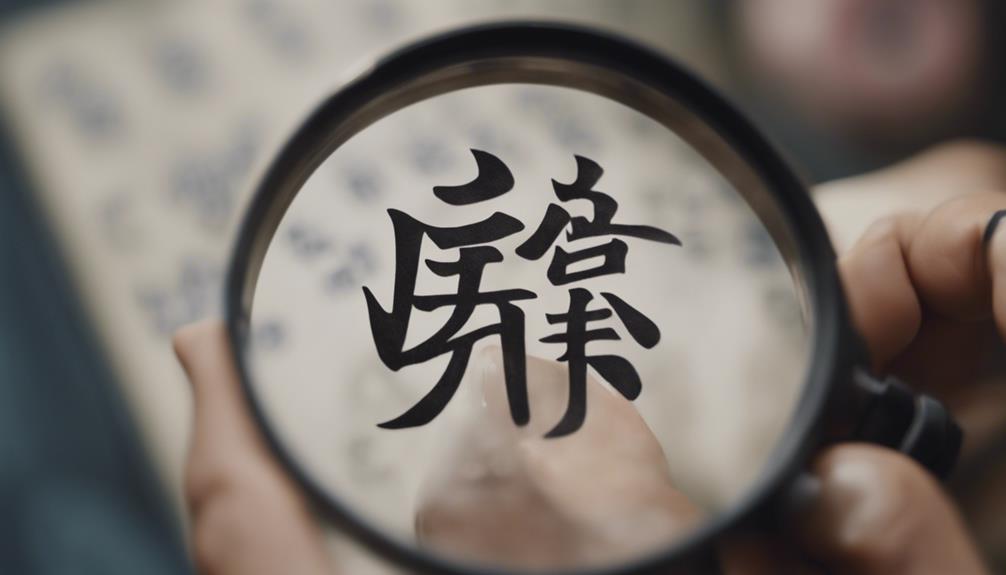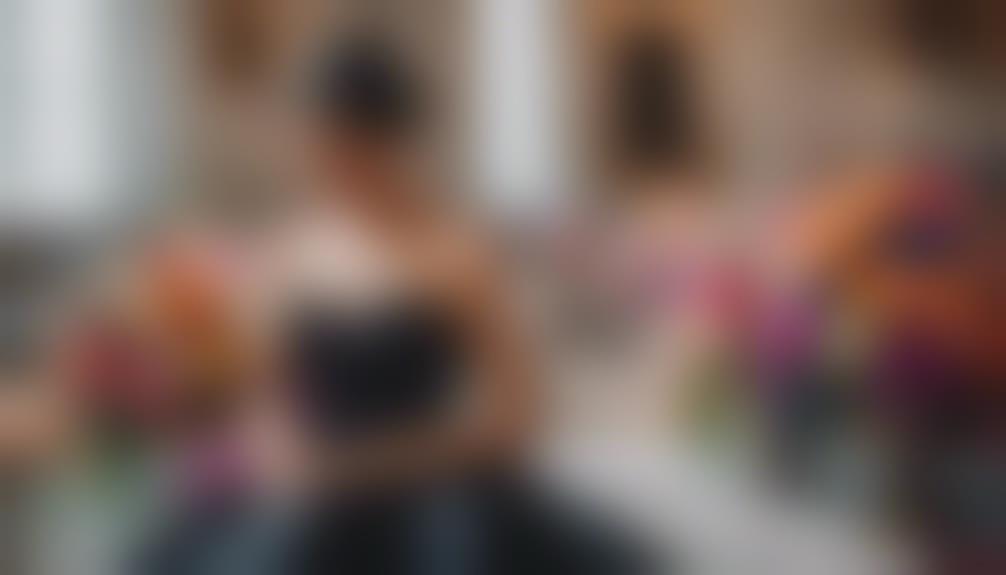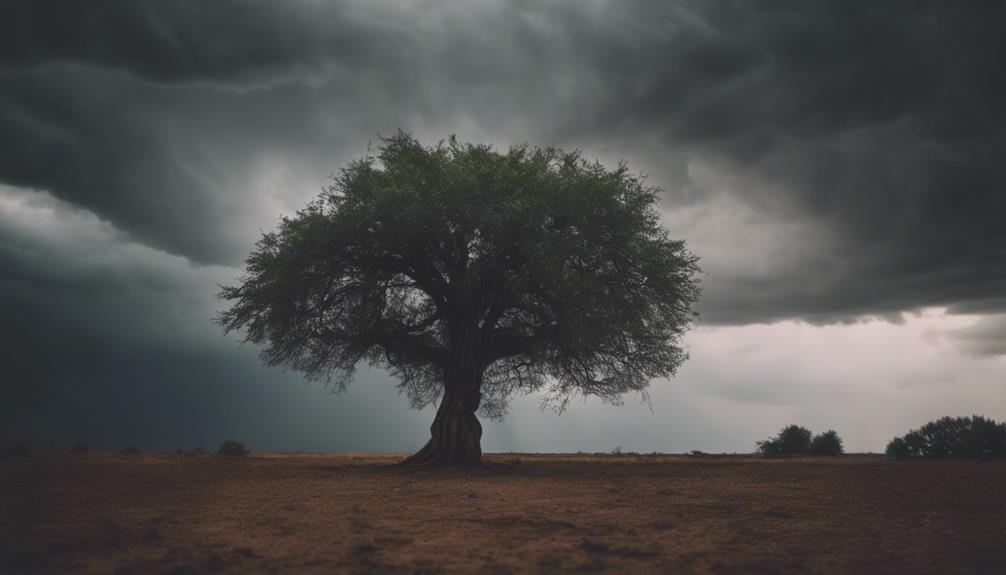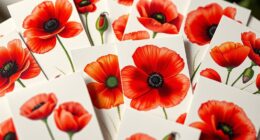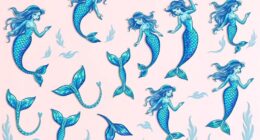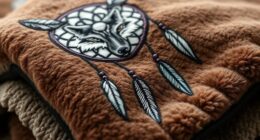Unearthing Viking symbols is like diving into a treasure chest of meaning. **Thor’s Hammer**, known as Mjölnir, stands for strength and guarding warriors in battles. Runes, like the **Elder Futhark**, carry special meanings for letters and divination. The **Valknut** signifies unity and fate, linked to Odin and fighters. **Yggdrasil, the World Tree**, ties nine worlds together, symbolizing balance and the life cycle.**Aegishjalmur** gives warriors courage and protection. Exploring the craft and magic of these symbols reveals deep layers, from flexibility to divine help. Each icon shows a unique part of **Norse culture**, hinting at a rich tapestry of beliefs and values.
Key Takeaways
- Thors Hammer symbolizes strength, protection, and fertility blessings.
- Runes are an ancient alphabet with unique meanings for writing, divination, and magic.
- Valknut represents interconnectedness, unity, fate, and Odin.
- Yggdrasil symbolizes cosmic order, balance, and the cycle of life.
- Aegishjalmur empowers warriors with courage, protection, and victory.
Overview of Viking Symbols
Exploring the world of Viking symbols reveals a rich tapestry of meaning and significance deeply embedded in Norse culture. These symbols weren't just mere decorations but held specific meanings and purposes in the lives of the Vikings. From Thors hammer, Mjölnir, to the intricate runes, each symbol carried great importance in Norse society. Adorning jewelry with these symbols was common practice, believed to offer protection and strength by invoking the power of the gods.
The Norse symbols weren't just aesthetically pleasing; they were deeply rooted in mythology. Symbols like the Valknut, Yggdrasil, and Vegvisir weren't just designs but representations of profound concepts within Norse beliefs. Additionally, symbols such as the Aegishjalmur and Horn Triskelion were used in battles, believed to provide protection and power to those who wore or carried them.
In Norse culture, symbols embodied a wide range of meanings, from guidance to victory and creation. Each symbol was a window into the beliefs and values of the Viking people, showcasing their connection to the spiritual and mystical elements of their world.
Runes and Their Significance

The essential world of Norse symbols extends to the ancient practice of using runes for writing, divination, and magical purposes. Norse runes, specifically the runic alphabet known as Elder Futhark, consist of 24 characters, each holding unique meanings. These symbols weren't only used for communication but also for mystical purposes, reflecting the crucial nature of the Norse people. Carved on materials like wood, stone, and metal, the runic inscriptions were believed to harness the power of the gods and the elements.
Rune masters, skilled in interpreting these symbols, played a significant role in Viking society, offering insights into the future and casting spells for various purposes. The use of Norse runes provides a glimpse into the beliefs, values, and cultural expressions of the Vikings, showcasing their deep connection to the spiritual world. The intricate designs of these symbols continue to fascinate and intrigue modern audiences, highlighting the rich heritage of Norse culture.
Valknut: Symbol of Interconnectedness

The Valknut symbol, with its three interlocking triangles, embodies the idea of interconnectedness in Norse mythology. It represents the unity between life, death, and fate, signifying the cyclical nature of existence.
This knot of unknown origin is a powerful reminder of the intertwined forces that govern the Norse worldview.
Triangles Representing Unity
Symbolizing unity through its interlocking triangles, the Valknut encapsulates the interconnectedness of Odin, warriors, and the cycle of life and death in Norse mythology.
This powerful symbol not only represents the connection between different domains but also embodies the complex beliefs surrounding fate and destiny.
The three triangles within the Valknut symbolize the interwoven nature of heaven, earth, and the underworld, illustrating the eternal link between these spheres.
Associated with Odin's wisdom and role as the god of war, the Valknut is a visual representation of his ability to control the fates of individuals.
Warriors who met heroic deaths in battle were believed to be guided by Odin, further cementing the Valknut's association with the afterlife and the eternal cycle of existence.
Knot With Unknown Origin
Interweaving its mysterious origins with the interconnectedness of Norse symbolism, the Valknut knot remains a powerful emblem embodying the intricate relationships between life, death, and rebirth.
This symbol of interconnectedness, composed of three interlocking triangles, signifies the bond between gods, humans, and the afterlife in Norse mythology. Associated with Odin and often seen as a protector of fallen warriors, the Valknut's exact origins continue to elude us, deepening its enigmatic allure.
The knot-like design of the Valknut serves as a visual representation of the eternal cycle of existence, reflecting the interconnected nature of all things in the Norse worldview. Its enigmatic origins only add to the fascination and reverence surrounding this profound symbol of interconnectedness.
Yggdrasil: The World Tree Symbol

Yggdrasil stands as a cosmic tree symbol in Norse mythology, embodying the interconnectedness of the nine worlds. This ancient ash tree serves as a bridge between gods, humans, and spirits, reflecting a deep bond between all beings.
Yggdrasil's roots reach into the past, present, and future, symbolizing the eternal cycle of life, death, and rebirth.
Yggdrasil: Cosmic Tree Symbol
In Norse mythology, the World Tree, Yggdrasil, serves as a cosmic link connecting the nine worlds of existence. Yggdrasil symbolizes cosmic order, balance, and the interconnectedness of all things in the universe.
This ancient tree is a central element in Norse cosmology, acting as a bridge between various domains. Its roots extend into significant worlds such as Asgard, Midgard, and Hel, showcasing its far-reaching influence.
Yggdrasil, as the cosmic axis of Norse mythology, embodies the cyclical nature of life, death, and rebirth, emphasizing the continuous cycle of existence. The imagery of Yggdrasil as a cosmic tree symbolizes the intricate connections between different dimensions and the harmonious balance that permeates the cosmos.
Yggdrasil: Norse Mythology Icon
Symbolizing the interconnectedness of the nine worlds in Norse mythology, Yggdrasil stands as a revered icon embodying cosmic order and the cycle of life and death. This World Tree symbolizes the intricate connections between domains like Asgard, Midgard, and Hel, showcasing the interwoven nature of existence. Yggdrasil's roots extend deep into different dimensions, while its branches stretch over the universe, linking gods, humans, and mythical beings. Here is a table highlighting key aspects of Yggdrasil in Norse mythology:
| Yggdrasil: The World Tree Symbol | |
|---|---|
| Representation | Cosmic order |
| Significance | Cycle of life and death |
| Connection | Interconnectedness of domains |
Through Yggdrasil, the Norse mythological belief in the unity of all things is vividly illustrated, emphasizing the harmonious balance of the cosmos.
Aegishjalmur and Its Protective Meaning

Associated with protection and victory in battles, the Aegishjalmur, also known as the Helm of Awe, holds significance in Viking symbolism. When exploring the protective meaning of Aegishjalmur, we uncover its powerful attributes:
- Fear-Inducing Symbol: The Aegishjalmur was believed to instill fear in enemies, acting as a shield for the wearer and deterring adversaries.
- Courage Granting: Vikings saw the Aegishjalmur as a source of courage, boosting the wearer's bravery in the face of challenges and battles.
- Divine Protection: By using the Aegishjalmur, warriors sought divine protection, believing it would safeguard them in times of peril.
- Barrier Against Malevolent Forces: The intricate design of the Aegishjalmur symbolizes a protective barrier against malevolent forces, offering a shield from harm and evil intentions.
The Aegishjalmur wasn't merely a symbol; it was a tangible source of strength and readiness, empowering warriors on their quests for victory.
Exploring Mjölnir and Its Power

Crafted by skilled dwarves, Mjölnir, Thor's hammer, embodies immense strength, protection, and divine favor in Norse mythology. This iconic symbol not only represents physical power but also serves as a shield against malevolent forces. The hammer's legendary creation by the dwarves infuses it with exceptional craftsmanship and magical properties. In Norse tales, Mjölnir was revered for its ability to level mountains and protect its wielder in battles against giants and monsters.
Thor's hammer wasn't only a weapon of destruction but also a tool for blessing important life events. Its presence in rituals symbolized the bestowal of strength, protection, and fertility blessings upon marriages, births, and other significant occasions. The unique design of Mjölnir, with a shorter-than-expected handle, underscores the importance of adaptability and quick thinking in the face of challenges.
Through its multifaceted symbolism, Thor's hammer continues to captivate audiences with its representation of strength, protection, and divine intervention in the face of adversity.
Frequently Asked Questions
What Are Viking Knots and Meaning?
Viking knots, intricate designs symbolizing eternity and interconnectedness, were commonly used in Viking art, jewelry, and architecture. These knots represented the cyclical nature of life, offering protection and guidance.
Reflecting deep connections to nature and spiritual beliefs, each knot held symbolic meaning. Variations in design conveyed different aspects of Viking culture, beliefs, and heritage. Vikings embraced the complexity and symbolism of these knots in their daily lives.
What Is the Most Powerful Viking Symbol?
When considering the most powerful Viking symbol, Mjölnir, Thor's hammer, stands out for its representation of strength, protection, and divine favor.
Wielded by Thor in Norse mythology, Mjölnir symbolizes might and the ability to safeguard both gods and humans. Its design varied but always conveyed power and protection across Viking culture.
Worn as an amulet or pendant, Mjölnir invoked Thor's protection and strength in battles and daily life.
What Does the Viking Swirl Mean?
The Viking swirl, symbolizing motion, progress, and personal growth, embodies the interconnectedness of past, present, and future in Norse culture. Found in various artifacts, it signifies cycles of life, eternity, and the eternal flow of energy.
This symbol reflects continual evolution and renewal in the Viking worldview, illustrating the concept of perpetual change and growth.
What Is the Viking Symbol for Protection From Evil?
We found that the Viking symbol for protection from evil is the Troll Cross. This symbol is known for its ability to ward off malevolent forces and create a protective barrier against ill intentions and dark energies.
Vikings used the Troll Cross as a talisman to safeguard themselves from harmful influences, reflecting their belief in spiritual defense and the power of symbols in Norse culture.
What Viking symbols are commonly used in Norse tattoos and what do they mean?
Vikings commonly used symbols like the Valknut, representing the interconnectedness of life, as well as the Helm of Awe, signifying protection. The Yggdrasil tattoo symbolizes the world tree and the interconnectedness of the nine realms. These 7 intriguing Norse tattoo meanings convey strength, protection, and spirituality.
Conclusion
To sum up, Viking symbols are rich in history and meaning, offering a glimpse into the beliefs and values of ancient Norse culture.
From the powerful protection of Aegishjalmur to the interconnectedness symbolized by the Valknut, these symbols continue to captivate and inspire.
So next time you see a Viking symbol, remember the intricate stories and significance behind each one. Their impact is truly larger than life, leaving us in awe of the wisdom of our ancestors.


